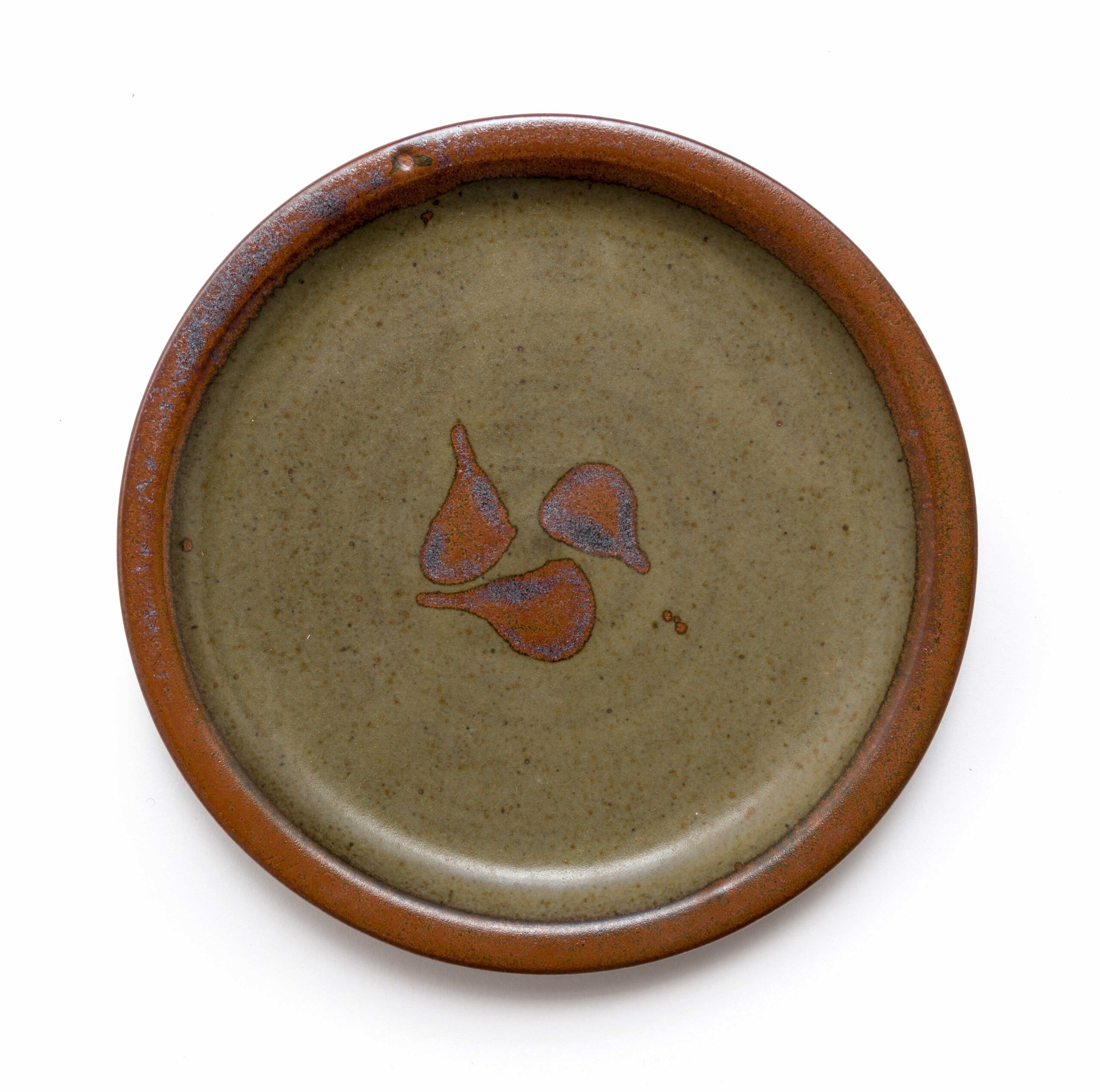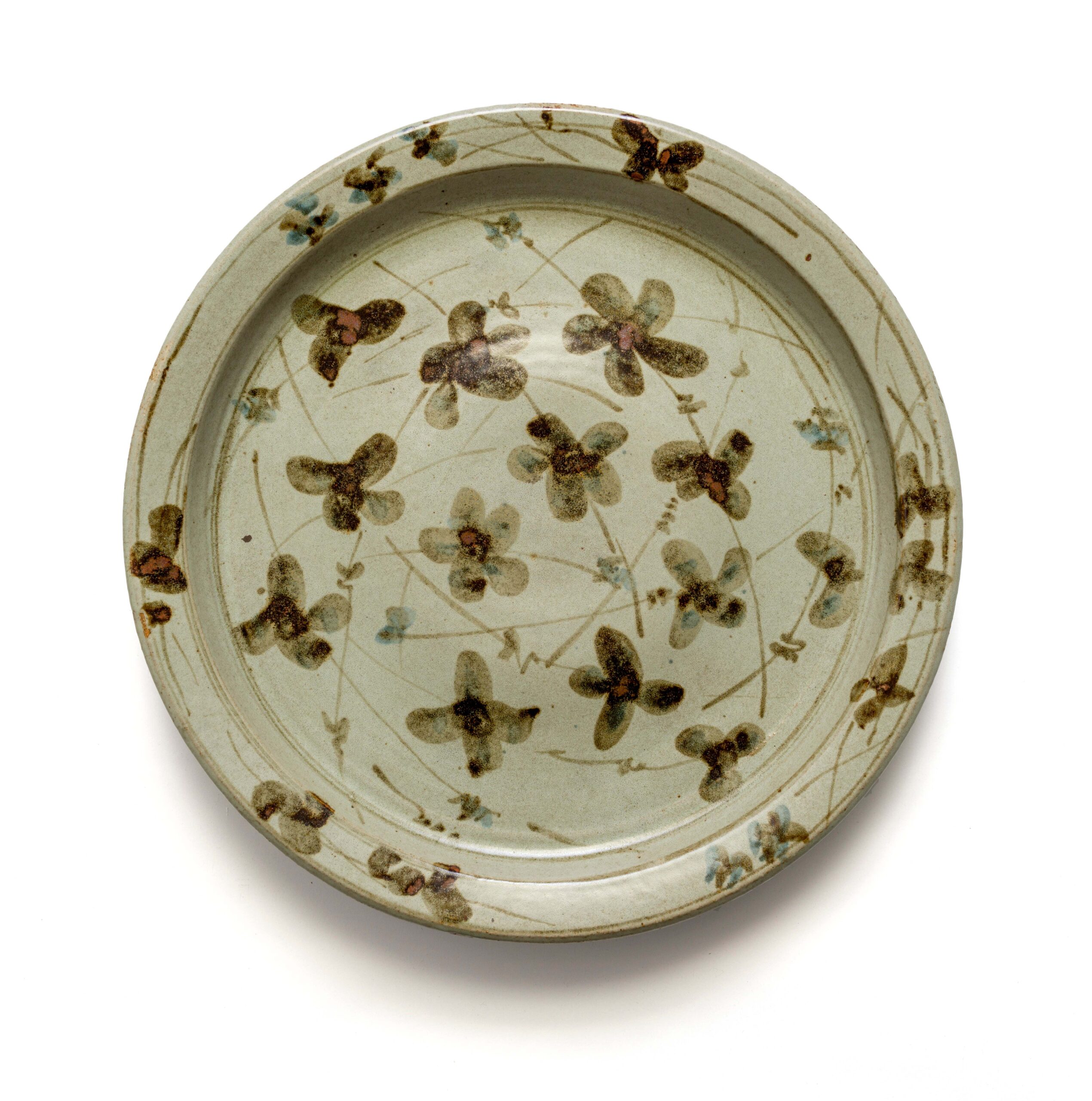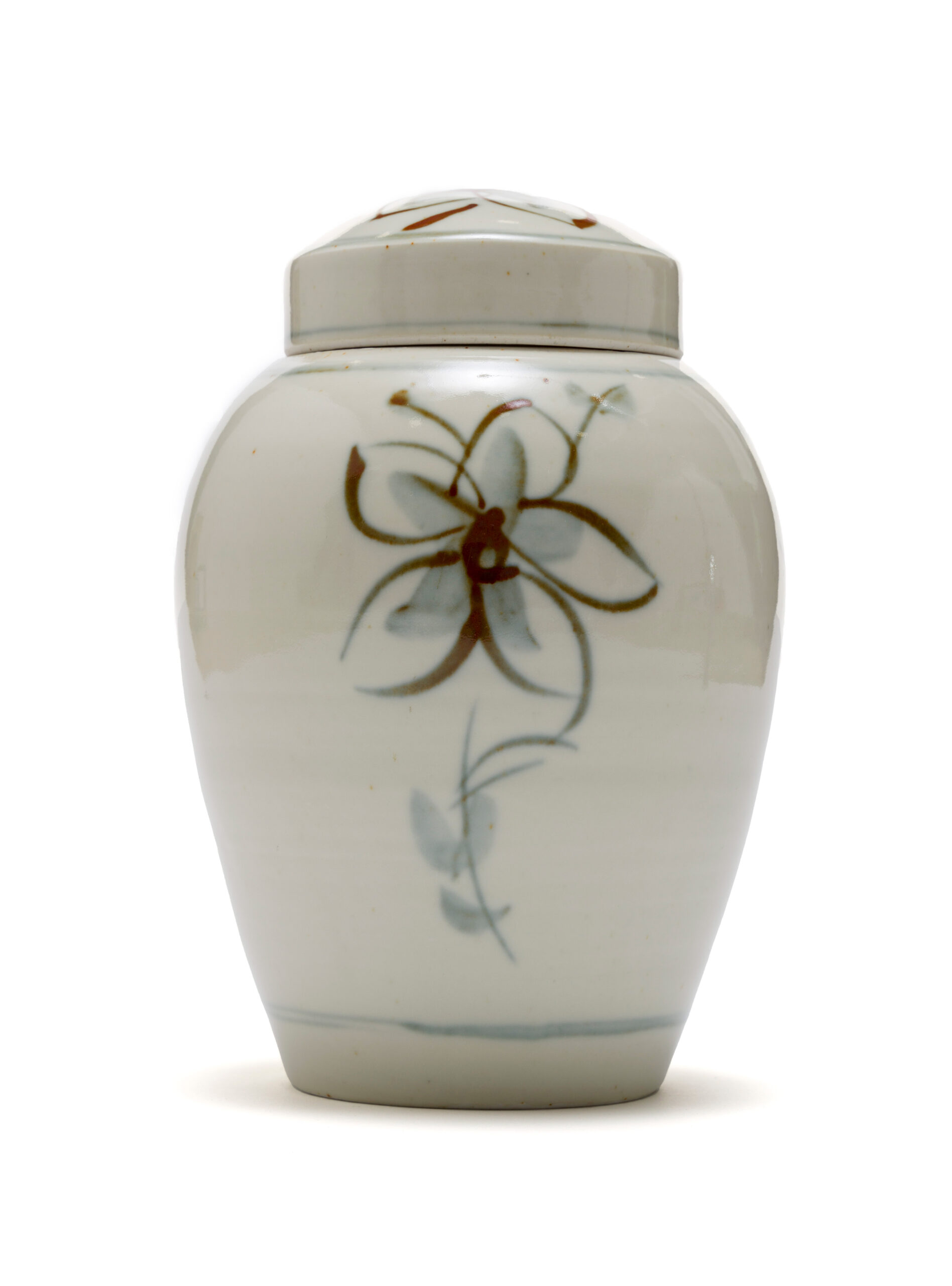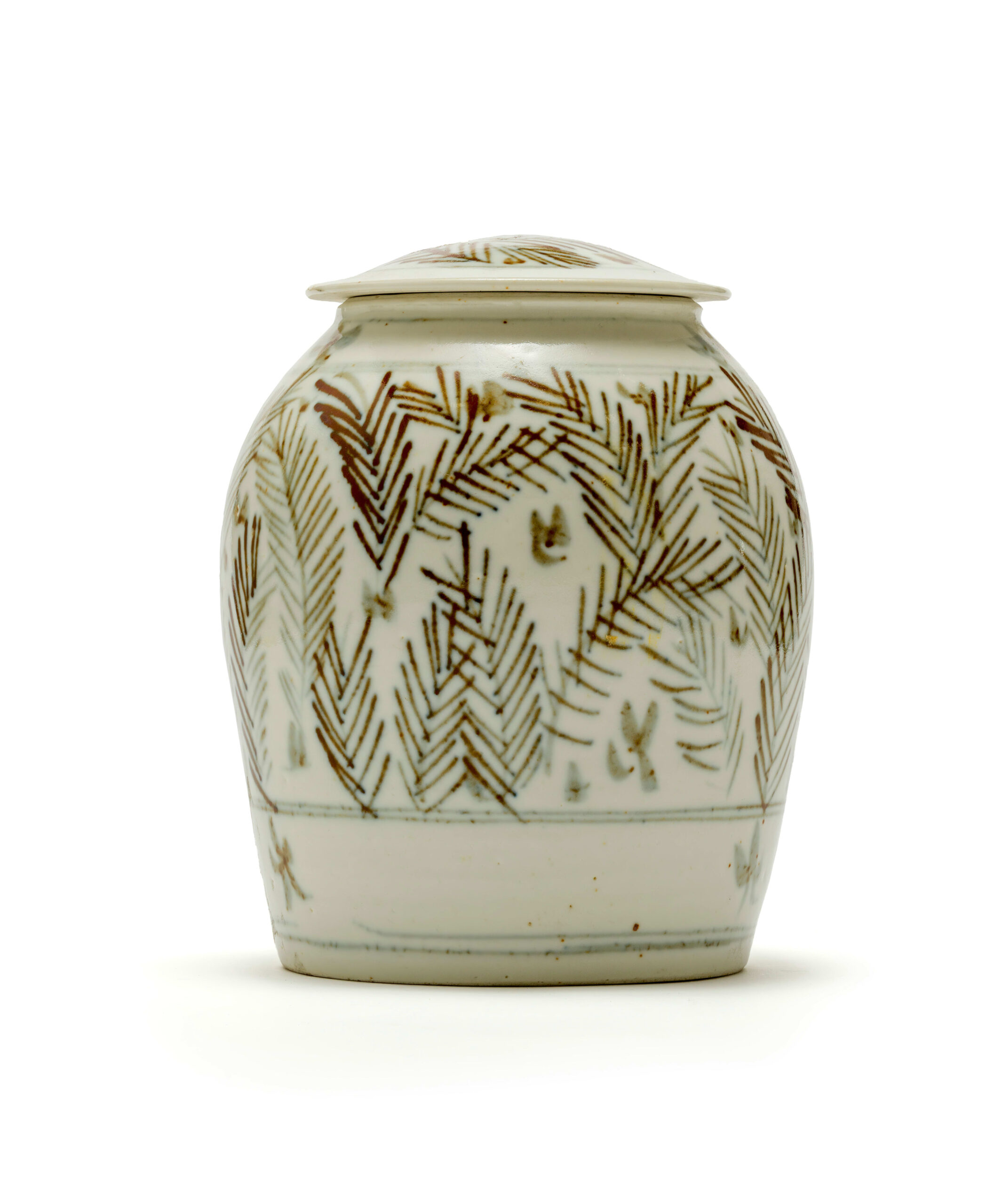
Archived
Celebrating Esias Bosch’s centenary
14 Feb 2023
Celebrating Esias Bosch’s (1923 – 2012) centenary, Strauss & Co is proud to present a single-artist, timed online auction of his work between 13 and 20 February 2023.
The sale, consisting predominantly of works from two major collectors of his work, includes some of Bosch’s very early earthenware, his favourite medium, stoneware, as well as his popular porcelain ware, and very special small- and large-scale decorative lustreware ceramic tiles. Bosch’s initial training as a fine artist at the University of the Witwatersrand is clearly evident in the painterly quality of these tiles and some critics even refer to him in this regard as South Africa’s ‘Claude Monet’ of ceramics.
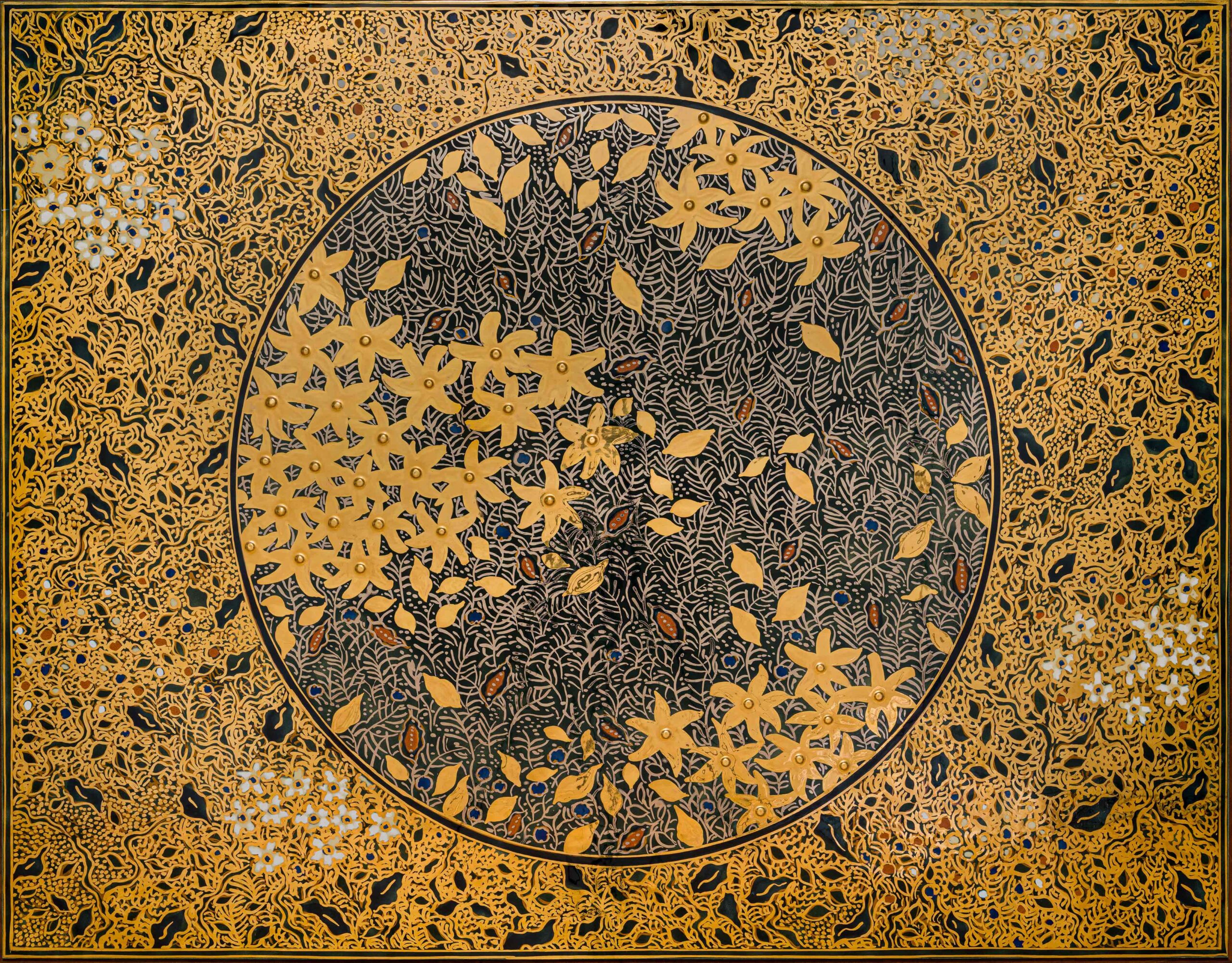
Bosch’s interest in ceramics was cultivated in his studies overseas: first at the Central School of Art in London, under well-known tutor, Dora Billington, and then later with such luminous ceramic artists as Raymond Finch and Peter Cardew. There are two little known facts about early Bosch, firstly, the brief period he spent at the Globe Potteries in Nieuw Muckleneuk, Pretoria before setting up his own studio in White River, Mpumalanga. Secondly, the fact that Bosch mentored Ian Dare, founder of Kolonyama Pottery, the studio set up just across the border in Swaziland, with Bosch’s influence clearly visible in the decorations of this studio’s wares.
Ceramics in South Africa can be broadly divided into four categories: first, traditional African earthenware, such as the clay pots discovered at Mapungubwe, and heritage ware, such as VOC plates; second, mass produced utilitarian ware manufactured in such large-scale factories as Continental China in Boksburg; third, potteries such as those producing limited numbers of decorative ware (Dykor Ceramic Studio, Globe Potteries, Kalahari Studio, Conrand Linnware, etc.); and fourth, individual artists’ ceramic studios, creating unique objects of art (Esias Bosch, Tim Morris, Hyme Rabinowitz, etc.).
Bosch’s studio, known as Die Randjie (The Edge), is unique in the method of firing ceramics, using local wattle tree wood, rather than electricity, in the heating of his kilns. Art historian Hans Fransen (1982:339) described Bosch’s works as having “a certain uncontrived African flavour, achieved not by the use of overt African motifs, but more by its general feel and the nature of its decorations”. Regardless of the medium in which he was working, Bosch consistently drew inspiration from his surrounding environment in the Lowveld, forming his iconic visual language. More than fifty of Bosch’s ceramic works are on display at the Strauss & Co offices located at 89 Central Street, Houghton, an exhibition accompanied by an e-catalogue, a special commemorative lecture by Bosch specialist, Dr Ronnie Watt on Thursday 16 February (booking essential), and a recorded interview with Bosch’s son, Anton, an accomplished ceramic artist in his own right.
Updated to Reflect Prices Achieved at Auction
2023 Press Releases
May
- 3 May 2023 Strauss & Co confirms its rock-solid reputation with a catalogue of blue-chip works by South African modernists for its May auction
- 3 May 2023 Strauss & Co's May Timed Online Auction Celebrates Namibian Landscape Art
- 12 May 2023 Rare and Fine Wine from Italy and Spain going under the hammer
April
- 5 Apr 2023 April Timed Online Auction with a focus on Portraits, Heads and Character Studies
- 6 Apr 2023 The 2023 Cassirer Welz Award Winner
- 20 Apr 2023 Important Black Modernist Artists Lead Strauss & Co May Auction In Johannesburg
March
- 2 Mar 2023 Strong results at Strauss & Co’s maiden auction of modern and contemporary art from Africa
- 6 Mar 2023 Strauss & Co’s upcoming March timed online auction celebrates colour and nuance
- 23 Mar 2023 Strauss & Co’s strong catalogue of women artists tracks a history of innovation from Maggie Laubser and Irma Stern to Sethembile Msezane and Ruby Swinney
- 23 Mar 2023 Art Nouveau: The Birth of Modern Style with Guest Lecturer, Dr Gregorio Thaon di Revel Mazzonis di Pralafera
- 29 Mar 2023 Record price for Irma Stern at Strauss & Co sale affirms South Africa’s status as the best marketplace to trade artworks by premium South African modernists
February
- 2 Feb 2023 Important Announcements from Frank Kilbourn, Strauss & Co Executive Chairperson
- 6 Feb 2023 Strauss & Co kicks off 2023 with a revitalised programme of online auctions
- 14 Feb 2023 Celebrating Esias Bosch’s centenary
- 16 Feb 2023 Strauss & Co and SANAVA partner on charity auction to secure artists’ studios in Paris
- 16 Feb 2023 The 2023 Strauss & Co Fine Wine Rhône-themed auction is one of our finest line-ups yet, featuring iconic producers from France, South Africa and the New World.
- 23 Feb 2023 Chairperson’s Report
- 27 Feb 2023 Strauss & Co’s Curatorial Voices auction maps the story of art from Gerard Sekoto to Cinga Samson
- 27 Feb 2023 "Art is a human virtue and I have given my whole self to it, for it promotes understanding among races rather than destroys it."—Gerard Sekoto
